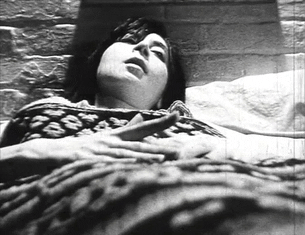
‘Stephen Dwoskin, born in New York on 15 January 1939, is one of the most visually rich and emotionally intense filmmakers in British cinema. After working as a graphic designer and art director for CBS and Epic Records, he made two short films, Asleep and American Dream, in 1961 and became part of the bohemian world of New York ‘underground’ filmmakers. In 1964 he moved to London on a Fulbright Fellowship to research British design, and in 1966 set up the London Film Makers Co-op with two other New Yorkers, Andy Meyer and Simon Hartog.
‘Working as a painter, designer and photographer, Dwoskin established his reputation as a filmmaker with a series of short films which won him the Solvay Prize at the Knokke Experimental Film Festival in 1967-8. His films were characterised by an obsessively intense scrutiny of the (mostly female) figures in front of his static or slowly moving camera, and an attention to image textures, printing processes and hypnotic soundtracks. Whereas most of his contemporaries in the world of avant-garde cinema espoused a modernist aesthetic focusing on the properties of the medium, Dwoskin explored the relations of desire that can be woven between the camera’s way of looking, the subject’s wish to be seen, the filmmaker’s irrevocable ‘separation’ from what he wants to see and show, and the viewer’s relation to this intricate network of imbricated desires.
‘In films such as Moment (1970), Chinese Checkers (1965) and Alone (1963), he allows shadowy narratives to be surmised by the viewer as s/he is gradually caught in the workings of a cinematic apparatus conceived not so much as a technological device than as a way of activating and playing with the desire to look. With these films, and others such as the emotionally overwhelming feature films Times For (1971), Dyn Amo (1972) and Behindert (1974), he drew as much attention to the viewer’s desire to become captivated by the filmed image as he did to the performer’s fascination in being captivated within the camera’s field of vision. The films often extend their engagement with performance to letting the actors improvise and ‘stage’ their own images, as in Central Bazaar (1976), or to near-dramatic narratives, as in The Silent Cry (1977) and Tod und Teufel (1973; an adaptation of a Wedekind play).
‘From the ’90s onwards, Dwoskin embarked on a series of autobiographical films turning the camera on himself and the spaces and people around him. Trying to Kiss the Moon (1994), an autobiographical film-poem, contains poignant home movie footage of his life in the US prior to the childhood polio attack which forced him to rely on crutches and eventually confined him to a wheelchair. It was followed by personal (Behindert) and historical (Face of Our Fear, 1992; Pain Is…, 1997) explorations of disability, made in the context of trying to secure full human rights for disabled people. After suffering bouts of severe illness, he made three profoundly moving video-films, Intoxicated by my Illness (2001-02), Some Friends and Another Time (both 2002), all pervaded by an unsettling sense of death’s proximity, which imbues each image and sound with an almost painful intensity.
‘In London, Dwoskin taught new generations of filmmakers at the Royal College of Art (1973-83) and at the London College of Printing (1983-87). He was active in various cultural institutions throughout his career, and published a personal account of the American and British avant-garde film worlds, Film Is, in 1975, and a book of his surreal and witty photomontages, Ha Ha! (La solution imaginaire) in 1993.’ — Quinzaine
____
Stills
____
Further
Stephen Dwoskin Site
PROJECT DWOSKIN @ Twitter
SD @ LUX
PACK 3 DVD STEPHEN DWOSKIN @ Re:Voir
Book: ‘Inside Out – Le cinéma de Stephen Dwoskin’
SD @ MUBI
Stephen Dwoskin – 14 films box 1/3 @ Experimental Cinema
The Legacies of Stephen Dwoskin
The Legacies of Stephen Dwoskin’s Personal Cinema
Podcast: They Shot Pictures Ep #09: Stephen Dwoskin
Where Have You Gone, Stephen Dwoskin?
Films and Videos by Stephen Dwoskin
SD @ Letterboxd
SD @ UbuWeb
The Many Hindrances of STEPHEN DWOSKIN
The Hungry Cinema of Stephen Dwoskin
A case study of Stephen Dwoskin’s digital archive
Allan Sutherland talks to film-maker Stephen Dwoskin about his career
Raymond Durgnat interviews Stephen Dwoskin (1984)
Interview with Stephen Dwoskin with Rozemin Keshvani
STEPHEN DWOSKIN (1939–2012)
____
Extras
Stephen Dwoskin (1981) by Gérard Courant
Short Time (Stephen Dwoskin & Véronique Goël, 2006)
Extrait d’un entretien avec Stephen Dwoskin
______
Interview
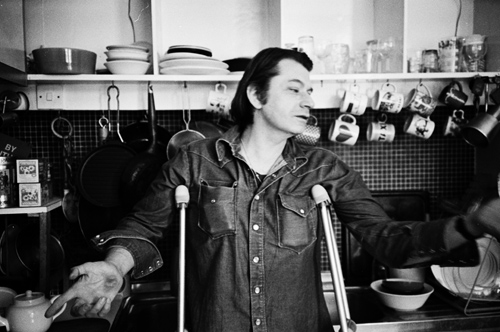
Decadrages Do you think it is legitimate to speak of different periods of your cinema, which can be a (chronological) way of ordering the corpus following three or four main axes? Approximately, we could say there is a first period, as you filmed (femine) models, and a second one, as you turn your camera against your own self. In between, there is experimentations on literate adaptations and an alternative to linear narration. And after the first phase until now, there is also documentary films. What do you think of that delineation?
Steve Dwoskin I’m thinking about your idea of “different periods” of my work. Basically your summary is correct though I think your ‘first period’ and ‘second period’ are more connected. The first I am the camera (and camera as ‘actor’) and the second is the same but I become both the camera unseen and seen. The flow and point of view, however, remain the same–there is only a slight (but big) shift….
Decadrages There is a sense maybe to apprehend your first short films, from 1961 to 1970, as a coeherent whole in term of processes and of shooting. To be more precise: Asleep (1961), American Dream (1961), Alone (1963), Naissant (1964), Chinese Checkers (1965), Dirty (1965), Soliloquy (1964/1967), Take Me (1968), Me, Myself and I (1968), Moment (1969) and Trixi (1970) all put face to face the man with the camera and feminine models (as Kulechov intends it: not an actor, but a model). But with different kinds of relations, which can imply as well binary as triangular interactions. Can you tell me a word about your general approach, which brings into play a dynamic of glances that Paul Willemen did theorise as a fourth look? And can you precise what are for you the ways of differenciating beetween those short films? Maybe by taking on account your relationship with your models, and the indications you give to them before shooting…
Steve Dwoskin Regarding the early films, let me say that the process was, at first, exploratory. Films such as Asleep and American were pretty much experiments to see how I could work with the camera and the element of time. I was moving from a more static practice painting, photography and graphics) so it was firstly necessary to expand my vocabulary and make the camera ‘eye’ my ‘eye’. With films like Alone, there begins my long relationship with the subject as both what is seen, what looks back and sees. The relationship with my ‘models’ (as you put it) had no theoretical beginnings. They were quite clearly ‘a relationship’ with another and the films became both a reflection of this relationship in that the ‘models’ also relate back to me. (A dialogue of sorts.) Also the films (in different ways) took on the position of being witness to, and part of that relationship. My intention was to explore the process of these kind of concentrated relationships as they develop through a period of time, much like following a thought, or spending some time with someone (or oneself). They were to follow a feeling about those kinds of moments (or periods) rather than a narrative as such. The conclusion (in the films) were never known while the films were being shot.
Why woman–I’m always asked–I think I merely filmed the ‘dialogue’ with that which I ‘desired’ to have a dialogue with. All the films of this period have high degree (greater or lesser) of sexual implications. It was not to make a voyeuristic relationship with the ‘model’ but to create an ‘actual’ relationship of participation (this is important)–it was to be involved–and triggered the way the camera participates and the way that the ‘model’ acknowledges the presence of the camera (and the person using the camera). This acknowledgement is the key shift from voyeur (the English sense of voyeur) to participant.
In Alone or Moment the look is often a glance, in Trixi or Take Me it is almost a continuous stare. In a film like Me, Myself and I the presence of the camera is by the consciousness of avoidance. Equally, in all these films the ‘themes’ are about relationships (with each other, with the self ; with the self, the camera and the other–which becomes the viewer !) (I think it’s this [these] combinations that brings into play a “dynamic of glances” that Paul Willemen (and Laura Mulvey) theorised as a fourth look!) I must say that all these early films were also part of a larger exploration’ with me and cinema–in order for me to find a personal language with the medium–to expand upon and utilise elsewhere and with other themes.
I should say that the early films were a critical part of my personal concern of how to ‘deal’ with the self–the inner space of the self–as one does in ones own mind when one is alone. I was very moved by the writings of James Joyce (particularly Ulysses) and with such parts as Molly Bloom’s soliloquy (my film Soliloquy was directly inspired by this). I was moved to considered how to turn the sense of words into images–to speak with the eyes, sort of–but mostly how to turn the internal process of thinking into visual representation.
Decadrages The process of dialogic and intersubjective interaction is a key notion to apprehend your work. I would say you do postulate a differenciation between two different planes. On the one hand, there is the experimentation on the filmic medium and its temporal dimension: how to frame a subject, to keep the intensity of the flowing time, and how to evolve from a static image to a linking of moving shots. On the other hand, you speak of a sphere of private relationship: there is a seen subject which turns back his glance and stare at you (the camera), i. e. at the audience. In other words, this relationship fissures the Hollywood representation of the subject-object : instead of a voyeurist gaze, you institute an interaction between the filmic and profilmic instances, involving an improvisation. Can we say there is an intrinsic relationship between the search of an accurate framing of the feminine subject and the exposition of an intersubjective experience you share with the model? And how do you evaluate the relation between your own immobility and the relative mobility of the filmed) subject?
Steve Dwoskin A thought occurs to me (I’m not sure how relevant it is to your question)–I transpose through (film ; the camera ; the montage) what I have and what I feel onto and with that which I do not have and that which I desire. The basis of the dialogue!
The question of ‘framing’ (and the pursuit of the frame) is the ‘look’–the look of the face and how the ‘face’ directs the body movement (towards and away) and through the eyes–the idea of the eyes being the extension of the ‘mind’–the expression of the inner subjectivity as it manifests itself externally–through the expression of the face–and the ‘gaze’ from the / by eyes. The camera also, is an extension of the eye – looking and capturing spontaneously as it relates, responds, feels about the other (the model’s response, mood, feeling)…
This is my ‘narrative’ so to speak. The surrounding situations (or environments for the action) is merely a backdrop for this pursuit–or this aim and intention. For me–to find a way to express how someone including myself) feels inside–to present it externally through the film as a reflection (or mirror) of this feeling or series of feelings or the changing evolution of one feeling into another feeling. (Feeling being a more complex array of inner moods, fears, desires, etc. The film–especially because of time and confrontation–is an attempt to extract–display–present–question–translate this complex inner network into the reflective potential of the moving image).
The mobility problem–physically limiting but the mind, the eye, and the look replaces the physical limitations by becoming very mobile inwardly; subjectively–and becomes another kind of ‘mental’ mobility. I suppose I replace one kind obvious physicality with another kind.
Decadrages Tod und Teufel thematises in a way the difficulties of communication and of relationships between male and female relatives. Can we say that the film, through the play, presents itself as a reflexive process on your own filmmaking?
Steve Dwoskin I would say Tod und Teufel only, in part, thematically (in general terms) represents a more external (situation) rather than a reflective process–mainly in my early films. Less so now as I’m more concerned (or, in addition to) the self reflective voice (the internal space) more likely found in (thematically) Beckett’s, Tsvetavea’s or Joyce’s writing / and in my own interpretation of ‘sur-realism’.
Decadrages Can you tell me more about your own interpretation of surrealism?
Steve Dwoskin I have a notion of Surrealism in that it has allowed me a kind of freedom. The way I have always ‘seen’ surrealism is that allows ‘normal’ contradictions to be put together and by doing so both ‘explains’ the contradictions while demonstrating them as contradictions. It also deals with ‘extremes’ that become relocated into a kind of ‘norm’. Alfred Jarry’s ‘Pataphysics’–placing an imaginary process on to a real process (this is an over-simplified explanation) is behind much of my thinking. Jarry’s idea, of course, is behind of surrealist thought. Artaud, Bataille, Duchamp, Bellmer, Aragon, Man Ray, etc.–and that ‘school’ of thought and way of processing work in that it is a way of re-looking and re-thinking without confinement. This kind of thinking has inspired me as way of processing my own ‘ideas’ since it constantly alters the ‘rules of engagement’ or removes the ‘rules’ altogether. It also plays with absurdity. I find life absurd and so surrealistic processing gives sense to the absurd. At the same time it somehow captures (or gives) a core meaning to that absurdity saying ‘it is reality’–I could dress this explanation up better verbally–I’m not a writer. Then, too, film-making is a surreal process.
Decadrages When you speak of ‘putting together’ things which do represent normally “contradictions”, are you thinking of a kind of collage or montage? How does this process relate to your own photomontages, Ha Ha! ou la solution imaginaire? Furthermore, is there a direct relationship with your way of understanding surrealism and Further and Particular 1988)?
Steve Dwoskin Collage or montage (or editing) is, in effect, a ‘putting together’ and in a general sort of way a surrealistic’ process. Whatever is ‘put together’ (or connected) begins to make a ‘statement’ or creates relationships. In that way one can put together two apparently different images and thus make them relate to each other. (You can put two different colours together and they then make a unique relationship as well!) These connections give a new meaning beyond what each individual piece, on their own, represent. One piece may on their own be a contradiction from the other, but by putting them together they no longer represent a contradiction. A new ‘logic’ (a new narrative) is formed. In Ha, Ha! this is a very fundamental process. Regarding Further and Particular–yes, this is a direct application of surrealism in that it tries to assemble ideas from both Jarry and Bataille. I think it is too much a literal application. I prefer how I used surrealistic notions in some of the later work like Visitors (2004) or the recent film Oblivion (2005) where the sense of surrealism lies behind the making rather than a literal interpretation…
Decadrages Further and Particular, as well as Oblivion, asks the question of the adaptation of literary texts. How did you consider your own way of transposition? Furthermore, these texts take part in a deviant branch of surrealism (Jarry appears as a model for the later surrealists, Bataille follows his own line and founds his group, and Aragon represents the political axis of the movement). What is your relation to them?
Steve Dwoskin The main connection between the authors is that they provide a kind of ‘vocabulary of thinking’ (for me) that deal with the ‘borders’ in areas such as personal behaviour and sexuality–and the extremes in these areas (and in opposition to the ‘conventional’ ways of expressing them) plus the point of view of those ‘isolated’ from the acceptable’–and that seems to capture my own feelings. My own life has been forced into being ‘outside’ the expected ‘norm’ so I find that their perceptions give sense to my own. I’ve not been particularly concerned with what ‘schools’ of surrealism these authors have been connected to. What they have provided for me is this kind of sensibility (and vocabulary of ‘thinking’ and ‘expressing’) that inspires me. I have tried to ‘translate’ or ‘harness’ this vocabulary with my own visual concerns. It is more about the ‘moods’ or under-narratives’ they put into a verbal form that I try to represent in a visual form, but with my own narrative, so to speak! I don’t usually try to adapt’ their narrative (though Further and Particular may be close to that) but try to translate that kind of thinking into my personal ‘story’ (that usually about me – as in Oblivion. It’s a kind of ‘kinship’!). I should point out–and this is important–it is not only the surrealists but other writers such as Beckett (my film Another Time, 2002) and Joyce (Times For, Soliloquy) that have inspired me because for whatever reason they all deal with ways of expressing the interior space of the self. This, above all, is the main drive of all my work. I’m not a ‘story-teller’. I’m a ‘reflector’ of this interior space. These writers have helped me find a ‘form’ to express in images what they do so well in words. Perhaps, to answer your question more directly: it’s the ‘poetics’ of their writing I try to adapt (or metaphor) and not their stories and I do this less consciously and less literally than it might appear.
Decadrages What strikes me is your constant search of an under-narrative–by focussing on details (i.e. close-up, unframing, etc.). Sort of what happens beyond the facts. You did link interiority with alterity, speaking of a border between personnal (sexual) behaviour and external (societal) normality. Can you precise by which means you do reflect an inner space, your own and that of the people who face the camera? And how do you position yourself in front of the question of the limits and their surpassing, which are central for Artaud and Bataille? Maybe I am irrelevant. But I cannot prevent linking the writing of a stream of consciousness (notably with Ulysses but also in a sense with Beckett) with the notion of an inner speech which dubs (adds to) the film. What do you think of that connection?
Steve Dwoskin For me it is to make films to free myself and audiences to find film as it should be, and not as it is. It is also to make films that explore and express the self. To express the self is also to expose the self, but at the same time to allow a dialogue with others. It is not only a dialogue but a process of investigation and reflection for all. To do this film making has to (in my opinion) be honest and revealing. It has to let the viewer be able to engage with their own selves and their own feelings. The films, therefore have to open up with the elusive and the intimate space to permit the viewer to enter or reflect upon it. It therefore can be a space where the viewer, like the film-maker, introduces their own form of ‘narrative’, a ‘narrative’ that is not necessarily conclusive nor resolved ; a process that is not made as a distracting story. For me then, films become like a mirror, as my films are. They are made as a process that is reflective (often meditative) and at the same becoming a reflector. This forces a type (or style) of film making that is outside or beyond the barriers of conventional ‘storytelling’ (and beyond even ‘voyeurism’). What happens between to viewer the film also happens (in the opposite direction) during the making between the ‘performer’, myself and the camera!
I think that the idea of ‘limits’ and ‘surpassing’ them are unique to Bataille or Artaud, though they do a precise stand on this. Surpassing the sexual ‘limits’ go even further with de Sade, of course, but I think most decent artists attempt to surpass the limits if one assumes that the idea of ‘limits’ represent the oppressive rituals of an existing convention; or the personal ‘limits’ of ones ‘inabilities’ and the wish to expand them (or explore them ; or confront them!) For me confronting and trying to ‘surpass’ the ‘limits’ is a way of making a declaration (or shouting at) the solemnity of the formal rituals of ‘convention’ (confinement) and to think / see / go beyond that kind of ‘oppression’.
I think that your connection is relevant. The inner voice (speech) certainly adds to the film.
Decadrages Can we make a connection between your films and the writing of a stream of counsiousness, as did Gertrude Stein practice it? Brakhage, for instance, did promote her writing as a model.
Steve Dwoskin For me, the closest connection to a ‘stream of consciousness’ in my film to writing would be Joyce’s soliloquy’s. It’s more like a process of ‘associations’ or the way conversations’ occur. I’ve never really managed to take to Gertrude Stein’s writing so I cannot make comment on her way.
_____
Some of Stephen Dwoskin’s films
____________
Naissant (1964-67)
‘Of all the stars of the New York underground, Stephen Dwoskin called Beverly Grant – also seen in films by Jack Smith and Ron Rice – ‘the most chameleon of the lot’. Whereas others ‘played themselves, she lived her parts to the fullest not only in the film but in her daily life‘. Here she plays a girl alone in bed – the same bed as in Dwoskin’s Alone – this time with something more troubling on her mind, though only the title hints at what it might be.
‘Naissant is notable for marking Gavin Bryars’s soundtrack debut. At the time it was recorded, in early 1967, the 23-year-old Bryars had recently left the experimental Joseph Holbrooke Trio, and this is one of few surviving recordings of him on double bass from that time.’ — Henry K. Miller
the entirety
_______________
Chinese Checkers (1965)
‘His Oriental predator is at first clothed in black, her ‘victim’ in white; slowly the costumes change, the victim acquiring a veil of mourning, until finally – as if to underline the ambiguity and interchangeability of their respective roles – the colours are reversed altogether. Still more interesting is the way in which, as the game becomes more ambiguous, Dwoskin adds fresh layers of make-up to his characters’ faces, until they become almost caricature masks of their original selves.’ — Letterboxd
the entirety
___________
Dirty (1971)
‘Dirty is remarkable for its sensuousness, created partly by the use of rephotography which enables the filmmaker a second stage of response to the two girls he was filming, partly by the caressing style of camera movement and partly by the gradual increase of dirt on the film itself, increasing the tactile connotations generated by rephotography. The spontaneity of Dwoskin’s response to the girls’ sensual play is matched by the spontaneity of his response to the film of their play.’ — John Du Cane
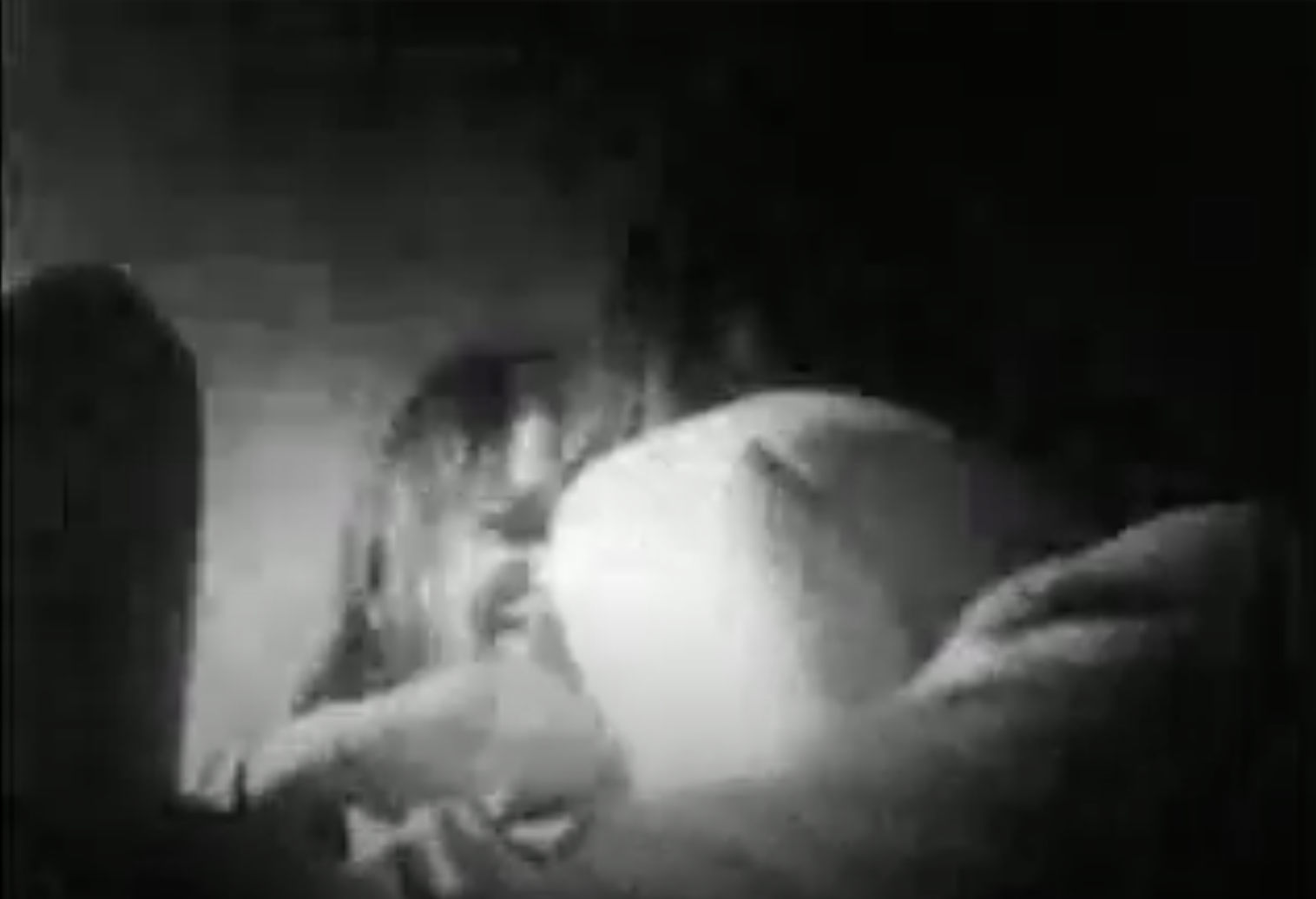
____________
Dyn Amo (1972)
‘What happens when the use of pop music is neither celebratory nor liberating? When it is the soundtrack to emotional pain and social oppression, and may be said to contribute to, or even generate such pain and oppression?
‘In the opening reel of Dyn amo – one of the most extraordinary yet most unwatchable works in the history of cinema – Stephen Dwoskin proposes just that. In a grimy Soho strip club, a stripper (Jenny Runacre) goes through the motions of her act to three pop songs – The Rolling Stones’ “The Under Assistant West Coast Promotion Man” (1965), Marvin Gaye’s “Can I Get a Witness?” (1963), and Phil Spector’s “Zip-a-Dee-Doo-Dah” (1962), performed by Bob B. Soxx & the Blue Jeans. These scenes are intercut with the opening credits, scored to Gavin Bryars’ menacing, minimalist drone.
‘The use of music in the first reel of Dyn amo is inspired by Kenneth Anger’s Scorpio Rising (1964), a film Dwoskin revered. Dyn amo shows the creative possibilities of Anger and the New York underground wilting in the basement of a London slaphouse during the leaden 1970s. Dyn amo has usually been read in terms of feminism, but Dwoskin often said that his films were actually about himself. Dyn amo is a cry for help from a New Yorker stranded in dispiriting London, where the dreams evoked by American pop music and underground film are muffled and ultimately drowned out.’ — Senses of Cinema
Trailer
__________
Girl (1972)
‘It is quite revealing how complex the simple form is. Shot one to one, a girl is confronted with nothing more than her thoughts. In the period of watching her (while she is looking at you) her expressions and movements turn into a ‘mirror’ for the viewer to experience his or herself. The experience is solely emotive between you and her, and occurs in “real” time.’ — Stephen Dwoskin
_____________
Tod und Teufel (1974)
‘Evolves around the rooms of a house as one of the main characters, Lisiska, is waiting and is studied in depth as she prepares herself for a meeting. The film attempts to display sexual barriers and misconceptions, and about the role-playing and the confusion around the whole question of sexual and sensual involvement. The essence is the confrontation with self-deception, lies and the real fear of contact with both sexes.’ — Letterboxd
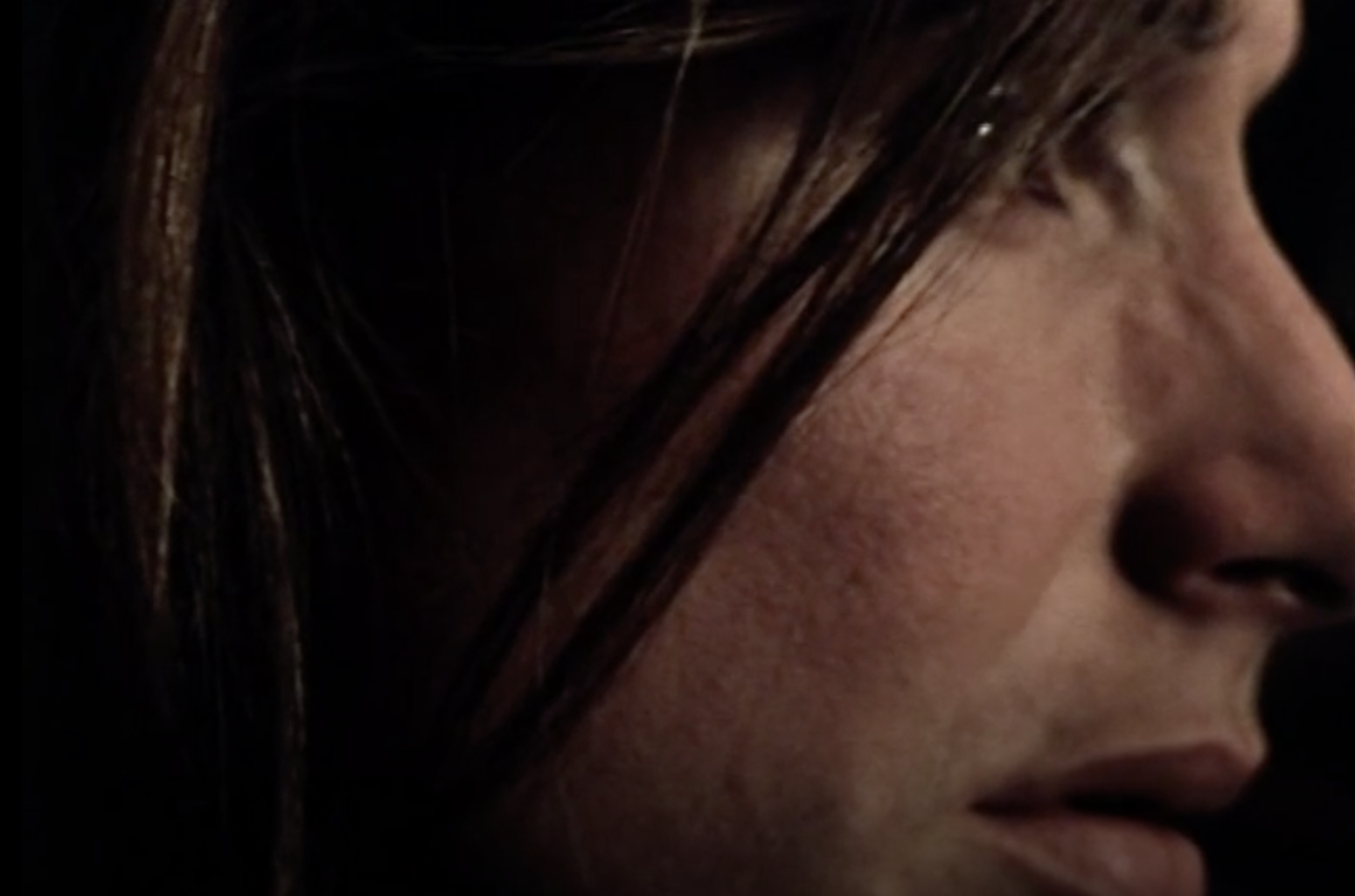
_____________
Behindert (1974)
‘It is clear that Dwoskin the disabled film-maker, in his stubborn determination to hold the camera himself, even though he has to prop himself up on a pair of crutches that could have come straight out of a Jacques Callot engraving, and secure a medieval knight’s straps and greaves around his enfeebled legs, might be not only the model of that hindered camera but also the artist who is prevented from grasping everything and forced to search the portion of the visible to draw from it a metonymy of everything, thereby projecting a “built” world. Indeed, semioticians have postulated that, for “diegetisation” or story-telling to occur, a world must first be built, the medium must be hidden and a space inhabitable by a character must be generated. This is the aim of all of the “compensatory” processes used (from cutting to editing, moving equipment, lighting and even special effects). However implausible the resulting built world may be (dinosaurs, Martians, godfathers, gladiators, secret agents), it is nevertheless a world that humans can inhabit and thus a world that is possible! Pace the semioticians and their sense of humour, Dwoskin does the exact opposite: he explores the uninhabitability of the world through one who is denied all of its comforts and conveniences (including that of sitting down when invited to do so by a goodnatured soul), as well as through everyone else – whose hostility he will have noticed before anyone else – and, within that hostility, that rejection, that barrier, he develops the interstices of survival, the flights of fancy, the attention paid to the minutest details, the incipient gestures. Dwoskin inhabits this uninhabitable world, understanding that doing so requires feeling the three-dimensional nature of the medium, the very matter that makes up the mediation between him and others, him and that very world, not a world built by him (the celebrated romantic world of authors), but that world, which must be confronted in despair, because it is the only world there is, and because its folds and layers no doubt conceal what is essential for survival: sensuality, desire, pleasure, amazement, rapture.’ — François Albera
the entirety
_____________
Central Bazaar (1976)
‘For this remarkable experimental film, the provocative avant-garde legend Stephen Dwoskin gathered together a group of strangers and filmed them as they explored their fantasies over a period of five days: a project that now sounds a little like TV’s Big Brother. The ceremonial gowns and make-up here not only evoke the eroticism of European horror movies but also highlight the film’s interplay between performance and intimacy. Jonas Mekas called it “theatre of life”.’ — re-voir
Excerpt
______________
Silent Cry (1977)
‘The Silent Cry is a fictionalised narrative film, based on documentary facts and extracts of one English girl’s memories and thoughts, all surrounded, and directed towards her particular dilemma. This dilemma can be summarized as her basic inability to have relationships, especially sustained relationships, and particularly with men. This is the total of her statement and the film. The construction and flow of the film follows the way she thinks – it is her point of view that is followed in the film. So all things are the way she remembers and dwells on them, and which are important to her.’ — S.D.
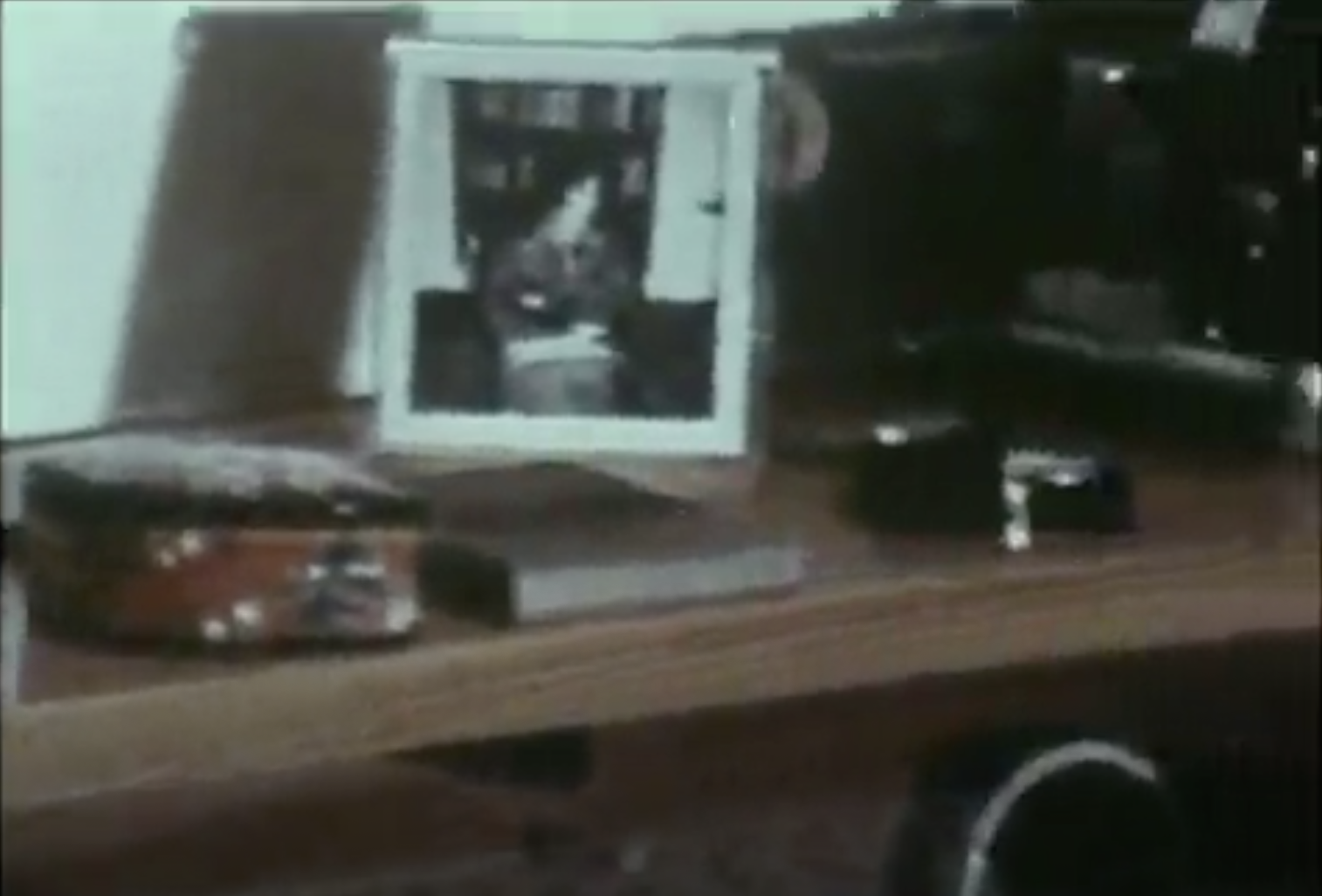
_______________
Shadows from Light (1983)
‘The singular vision of avant-garde filmmaker Stephen Dwoskin sheds new light on the work of British photographer Bill Brandt, focusing in particular on his connections with the Surrealist movement, his portraiture, and his nudes. The film was broadcast as part of Channel Four’s ground-breaking series Eleventh Hour (1982-88), devised to showcase independent and experimental films.’ — bfi

_______________
Ballet Black (1986)
‘Stephen Dwoskin’s Arts Council film tells the story of Ballet Negres, an innovative all-black dance troupe founded by Jamaican dancer Berto Pasuka and active in Europe from 1946 to 1952. Exploring the company through archive film and photographs, as well as a reunion of the original members after 35 years, it climaxes with a vibrant performance of Pasuka’s They Came by young black dancers. The film’s fragmented style and lack of traditional talking heads can be challenging, but its historic value and rhythmic blend of sound and image reward the persistent viewer.’ — Stephen Bourne
Excerpt
______________
Trying to Kiss the Moon (1994)
‘In Trying To Kiss The Moon, Stephen Dwoskin tells the double story on memory, bringing together the beauty of its documents and the sadness of its elusiveness. Extracts from Dwoskin’s own films are collaged with photographs and bits of home movies, still vitally alive with the moment they were taken. But their presence is painfully innocent; little did these images know. Dwoskin implies how they would be overtaken by time and become the signs of stories that are half remembered or cannot be told. The film is absorbing to anyone who has undergone this experience with documents of their own memories.
‘At the same time, the images are marked by Dwoskin’s own idiosyncratic style of film-making and his characteristic use of the camera. His film very often existed, in the first instance, as document: he would film a scene in order to see what would happen, allowing the people in front of the camera freedom to develop their actions and, most of all, the develop an active rapport with the camera. And, as his films are very often about his/the camera’s relation to women, the faces in the extracts look out of the screen inquiringly, or erotically, or angrily, into the lens and – as it now seems – into the future. The camera zooms and records in its hand-held instability the presence of the film-maker; it reframes and allows time to pass, so that the shot gradually turns into a portrait in which the author’s presence is also part of the image. There is, therefore, an acknowledgement of time and of the exchange of looks already there in the raw material; and this material, edited into a film with a further rhythm and significance, returns in this film with all the rawness of the moment when it was shot.’ — Laura Mulvey
the entirety
_______________
Pain Is… (1997)
‘A fascinating companion piece to David Cronenberg’s Crash or Kirby Dick’s Sick, Pain Is… combines interviews, archival footage and Dwoskin’s thoughtful voice-over to arrive at a scrupulous anatomy of pain (encompassing disease, dental work and sadomasochism). The interviews range from those who suffer from chronic pain to those who find pleasure in wilfully inflicting pain. Dwoskin doesn’t belabour the distinction, choosing instead to search for underlying meanings. Without getting into tortured semiotics, he examines the language of pain and wonders, amongst other things, if it is possible “to make an image of pain”.’ — Dennis Lim
the entirety
_____________
Another Time (2002)
‘A film about a man, an unseen man, perhaps immobile or displaced, trapped in solitude, filling the intervals with reflection and desire. He resides in the tension of a modest, detached space fixed with the memories of another time, with other people passing, some invading, and with the women who will not stay nor leave. In this space the obscure edges between what is what was overlap. Time fuses into a silence that is not a silence at all, but the question “am I here”?’ — film affinity
Excerpt
_____________
Lost Dreams (2003)
‘Often implicating the viewer in a voyeuristic situation, Dwoskin uses the camera as an extension of the eye – looking and capturing spontaneously as it relates, responds, feels about the other (the model), the eyes being the extension of the ‘mind’. In this film, these staged meetings take place in retrospect.’ — IFFR
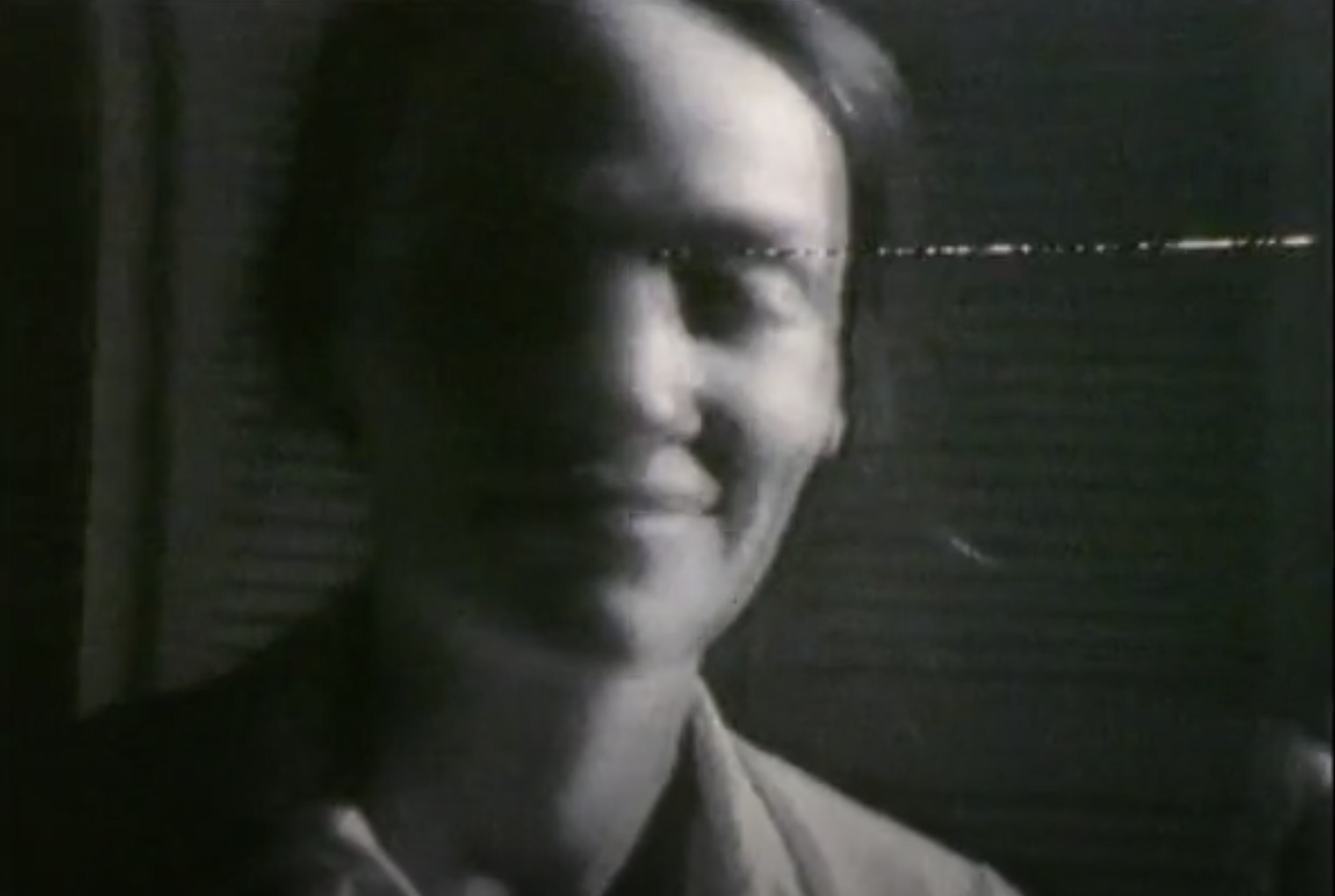
_______________
Ascolta! (2008)
‘Liu, crying, sings “Signore, ascolta!” Liu can bear it no more. She sinks to the ground, exhausted and sobbing. Puccini makes tears of joy and of sadness. Ascolta! was inspired by Puccini”s opera Turandot.’ — Valérie Maës
Excerpt
_____________
Age Is… (2012)
‘AGE IS… is a new feature meditating on the subjective experience and cultural concepts of ageing. The film is an ode to the texture, the beauty, the singularity of aging faces and silhouettes, a hypnotic poem in the « Dwoskinian » meaning of the term which is long ob- servations of very tiny details. A gesture, a pause, a look, a moment. Throughout his films intimacy has always played the leading role and this is also true for “Age is…”, all the faces being those of close friends, of their relatives and sometimes even of Stephen himself.’ — re-voir
Trailer
*
p.s. Hey. ** Molly Rima Hoopes, Hi, Molly! How cool to see you here. Yes, meat as far as the eye could see. Crazy! xo, Dennis. ** David, Hi. Uh, I think ‘MiM’ was their second album. I remember thinking it wasn’t good, and I pretty much bailed on them after that. Nah, you’d be amazed how uneventful I can be. ** David Ehrenstein, He’s certainly one of them. ** Tosh Berman, Hi. As I’m sure you know, I haven’t eaten meat since I was 15. A producer meeting on a Sunday! That’s a dedicated potential producer right there. I hope the meeting went well. How was the feedback? ** Ian, Hi. Oh, man, I’m so, so sorry about the loss of your friend. I lost a good friend and collaborator late last year, also way too young, and I’m still kind of in total shock about it. Stay strong. I hope you’re doing as okay as you can be. Love, Dennis. ** Bill, Hi. I was surprised too. I just wondered one day if ‘meat’ was a potential thematic for those posts I like to do, and I went in search, expecting a puny bunch, but … what do you know? All of that red was nice somehow. That’s too bad: ‘Witchfinder General’ is not a bad title. Oh, well, the year is very, very young. ** Dominik, Hi, D!!!! Happy New Year to you! I’ll put @strange_ creature_ collages in my search engine, thank you, although instagram doesn’t let non-members have more than a tiny peek inside, which is one of the reasons I don’t have an account there. Elitists! (or something). I tried to remember when I read that molten lead thing if I had ever had that particular fantasy, and don’t think I ever have, strangely enough, ha ha. Although I do think something like that happens in ‘120 Days of Sodom’. Love hearing your Love out about the ‘molten lava’ thing and getting a boner at the idea and saying, ‘Okay, if I can do poppers’, and feeling totally normal, G. ** geymm, Hi. Yes, in that sense, ‘The Sluts’ could be categorised as non-fiction. HNY to you too! Ha ha, no, if anything that post was a challenge to myself because just the idea of meat makes me feel a little ill, much less looking at it. I figured it might make every viewer a little squirrely, whatever their diet. I hope you didn’t throw up! ** David Fishkind, Hi, David! Oh, thank you! I did read the piece you sent to me before and admire it very much. Sorry I didn’t manage to tell you so. I can be a little slow on the communication front. I greatly look forward to the new piece. Everyone, David Fishkind is a superb writer, and he has just published … and here I quote … “another installment in my quartet of tales. “The Children of Zoar” is about opioids, foster care, private education, pedophilia, incest, surveillance, the digital divide, the legal system, secrets, and flying and takes place 2 or 3 or 6 years from now.” I read an earlier installment, and it was fantastic, so I urge you to join me in checking out this new one. It’s here. Your reading list of last year is very impressive, and thank you for including my things. There are a lot of books in that list that I love a whole lot. Thanks much for coming in here and for the generous share. Take care. ** _Black_Acrylic, You’re scaring me, man, ha ha, but for real. ** T, Hi, T, and a HNY! I don’t think I’ve ever fainted. Huh. It does suck massively about the producer, yes, and thanks for the commiserating. He wants another month to try to get funds, but it’s basically pointless, and I’m sure he’s just stalling. So, yes, Zac and I are now actively looking for a new producer for our film. And we’re very angry. We totally got taken by that guy. It’s infuriating, but onwards we go because we have no choice. It seems highly possible that I might shout ‘nyah nyah nyah nyah nyah’ at some point today. If I can remember, I’ll turn my phone’s movie making function towards my face and prove it. I hope your day is like that thing that happens in the movies when one character is at the airport and sees their long lost wife or kid or whoever in the distance and gets a look of insane joy on their face and runs at the long lost beloved full speed with their arms open wide. ** Steve Erickson, I seriously doubt it. It would be nice if art had that power, but … Your laptop is such a brat! Really, at least from afar, it seems like the most obnoxious laptop ever. ** Brian, Hey, Brian. I’m think it’s partially that lurid red color. Well, in combo with the subject matter, of course. Oh, jeez, now your aunt? So I assume you’re masked 24/7 at the moment? Fingers very crossed. Thanks about the interview. It was fun to do, and I’m glad if that came across. On NYE I watched a documentary about Ricky Powell, the early HipHop and Beastie Boys photographer. It was a standard fare doc on the form front, but it was quite interesting. I like ‘White Ribbon’ a lot. It might be my favorite Haneke, possibly. So, how is your first week the big ’22 looking so far? Have a swell first portion, i.e. day of it. ** Okay. I’m letting the blog concentrate on the films of the fascinating British director Stephen Dwoskin today. I hope it makes you lean forward, peer, read, scroll, click, watch, and thereby achieve some form of satisfaction. See you tomorrow.
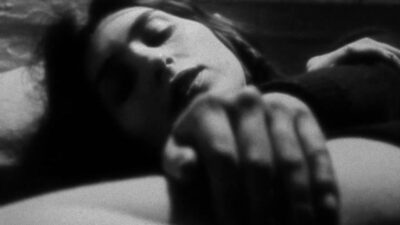
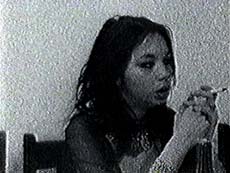
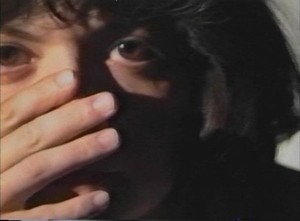
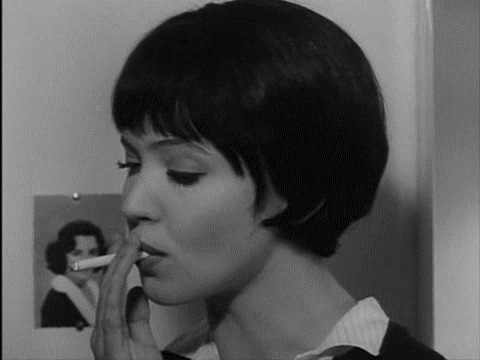

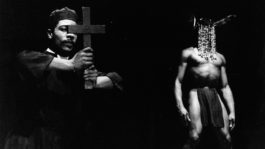
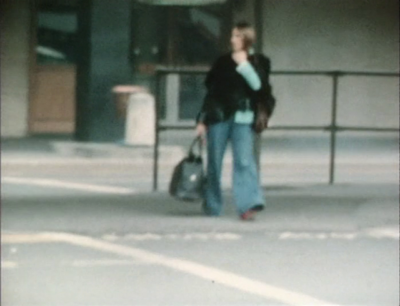
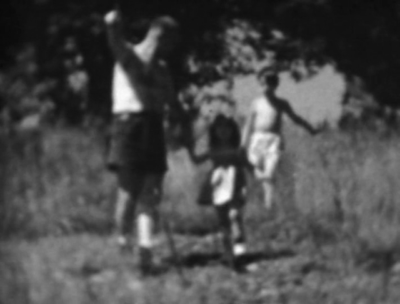
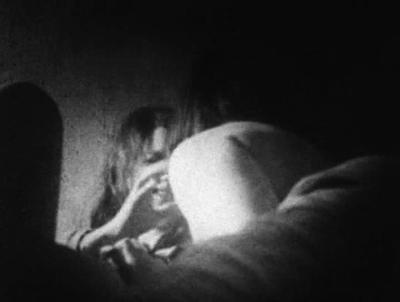
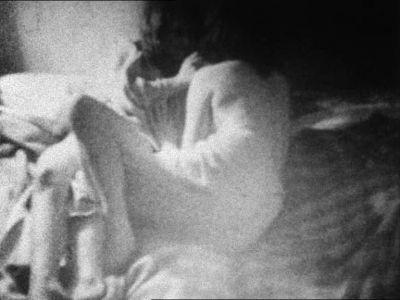
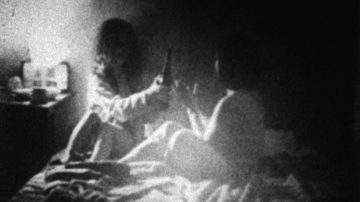
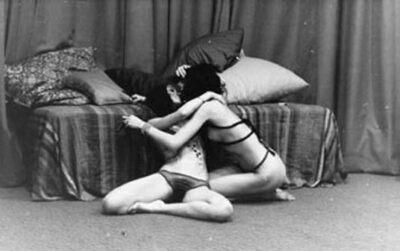
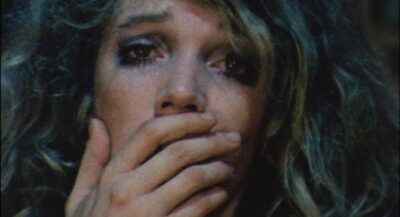
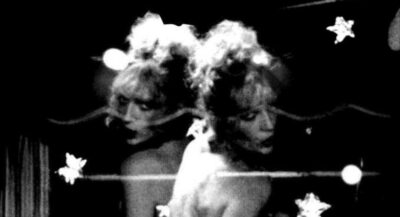

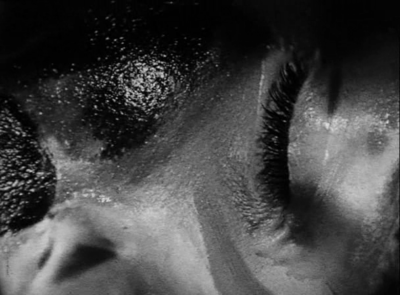


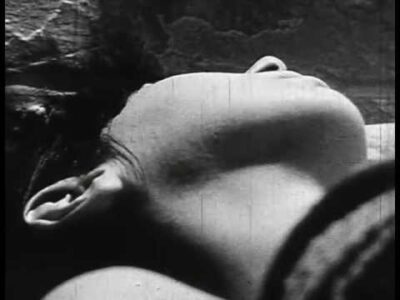
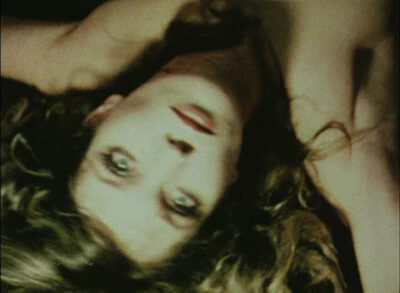
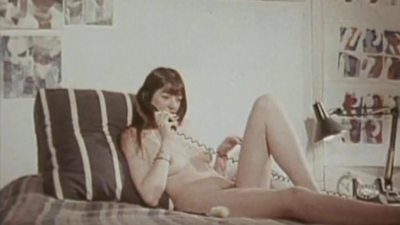
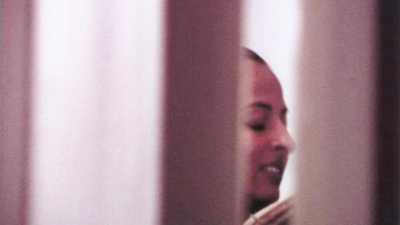

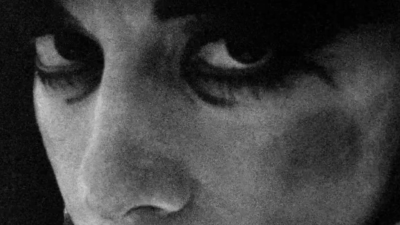


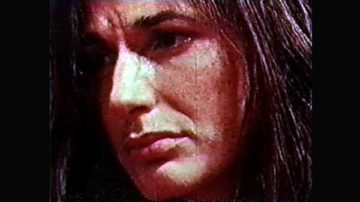


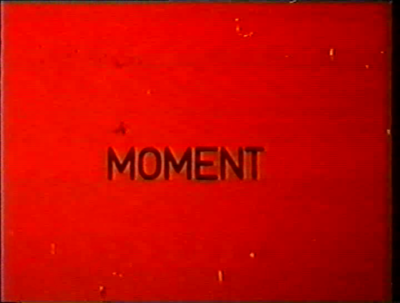

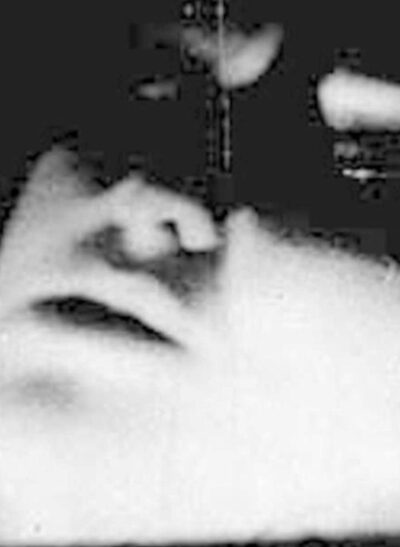
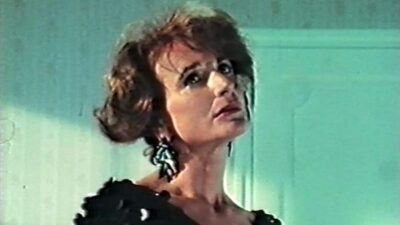
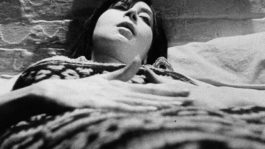
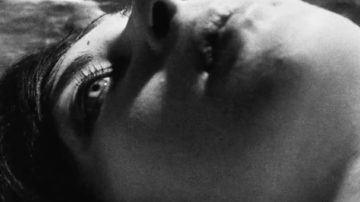
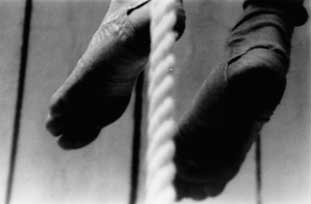
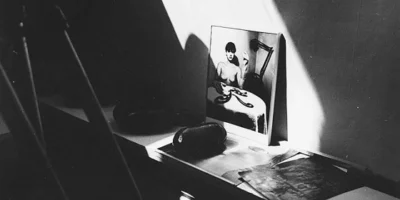

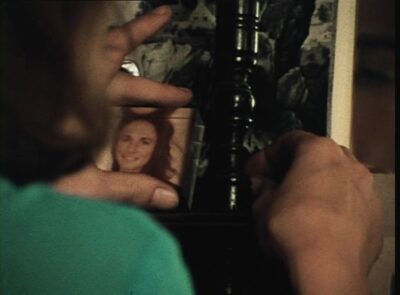
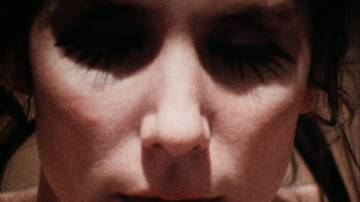
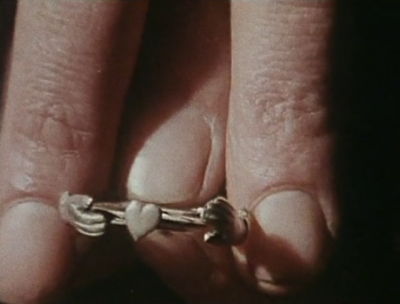
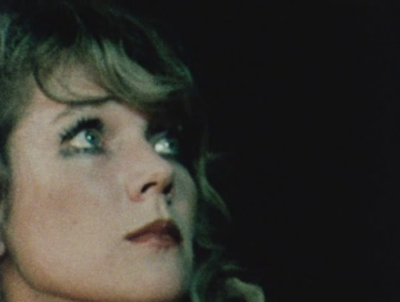
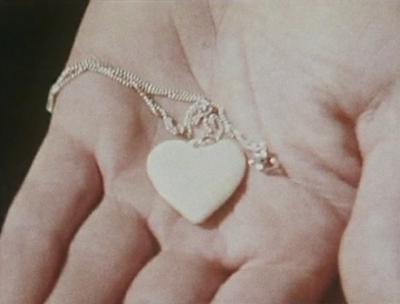


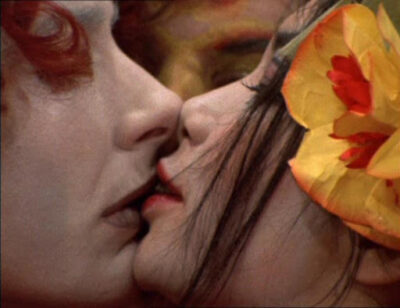
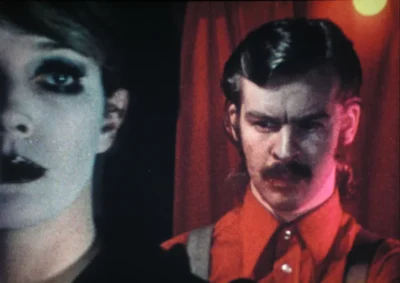
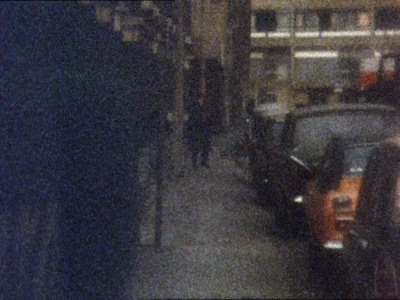
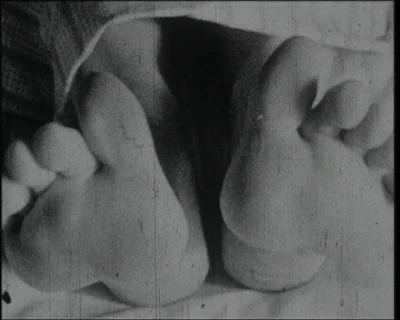
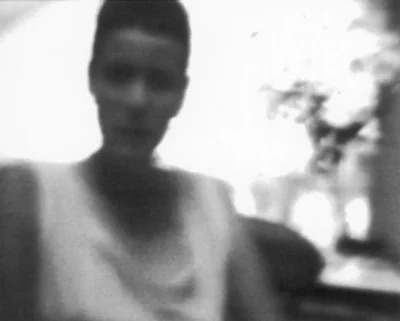





 Now available in North America
Now available in North America 
Hi!!
I don’t know Stephen Dwoskin’s work, but the stills and movie descriptions are VERY intriguing, so I’m gonna investigate now. Thank you for the introduction!
Damn, Instagram’s fucked up. It used to let non-registered people look at public accounts way back when, but I don’t know how it works now because SCAB has an account, so I’m free to roam. I do hope you get to check out the collages, but if not, we’ll figure something out.
Hehe, my love stole his line from Bust_McNutty’s comment under TwinkAnimal’s profile in the latest slave post. Love nodding and handing your love a full bottle of poppers and saying “Knock yourself out, darling.” while getting prepared for the upcoming fun, Od.
Timothy Jack Mccoy was killed 50 years ago today 3rd Jan 1972 by Gacy… although a discrepancy suggests it could have been on the second of Jan 1972 … so it reads as a gif date… 2nd/3rd 2nd/3rd… the 3rd was my first birthday…
Desmond Tutu died shortly before New year’s… a few days before…
The funeral of Tu Tu/2 2 happened on the first day of 2 2… symbolic? Yep.. you bet it is Den…
The Gacy date dances… 2nd and 3rd…. 2nd and 3rd… Gacy was a monster…. although I’m happy to share my 1st birthday with the death of sweet Timothy Jack Mccoy as it feels symbolic…. the first victim….
Won’t you dance for me Dennis on my birthday??? The gods/ the devil is watching!! Waiting….
X
Aye!!! Dance!!! Dance!!! a-Mr Dennis Cooper!!! I sing a Spanish tango for a you hey!!!! It’s a for Timothy Jack a Mccoy!!!! You no dance!! I kill!! Or my name is not a Maria, Isabella, Camila, Malaria, Gabriela!! dance dance!!! Hey!!!
This posting is good!! I like a very much!! Thanking Cooper
Dwoskin is exceeingly specail. Botha filmmaker and a film historian of the avant-garde his mere presence in a room was eletrifying. I well recall his showingp at screenings with the elaborate cluth of canes and such h used to get around rather than a wheelchair. He wanted everone to see his real physical sef — which for many people was quite a challenge.The “crippled” are socially segregated in a reflexive way the Dwoskin refused to participate in.
Thanks so much for the kind words and the shout out, Dennis. I wasn’t familiar Stephen Dwoskin’s work. Interested in checking it out. Looks obscene and deranged as Brits do best. Speaking of British cinema, I saw in a previous post you were considering seeing ‘Last Night in Soho.’ Did you end up seeing it? If so, what did you think?
I don’t know of Stephen Dwoskin’s films. Intriguing! The meeting we had with the producer went magically well. For me, the journey of doing this film is a total new adventure. If everything happens as it seems to be at the moment, I’m thrilled. If it fails, I’m still happy to be working on this project. It’s the first time I worked with another artist/writer/filmmaker and that is wonderful in itself. My goals are minimal at this point. I just want to win the best film award at Cannes, Venice, Tribeca, and elsewhere. And then an oscar of course, and then many many lunches with future producers and film people (them paying of course!) But seriously I’m having some dark times at the moment, and doing this work is really essential and important to me. And you will find your producer!
Stephen Dwoskin is a new name to me and his work and personality seem really compelling. I’m grateful for the introduction as this is defo not mainstream cinema.
I’ll join the chorus of “I don’t know Dwoskin’s work, but this looks intriguing”.
Just when I thought I’d cleared some of the deadwood from my watchlist, I checked worlds cinema.org and spotted the new Weerasethakul, a 2020 COUM Transmissions doc, a recent Brothers Quay short, and a couple other items I’ve had trouble locating. They also have The French Dispatch (!), but I’ve seen that.
Sorry to hear about the dark times, Tosh. Hope 2022 looks better for you soon.
Bill
Happy New Year D!
I’m Dwoskin unfamiliar but I’m always puddy in the hands of a smoking Anna Karina., so I will certainly delve. (2 months no cigs for me now!!!!) Also sometimes I forget about Ubu Web, I need to spend a weekend hanging out on there.
I just finished reading Douglas Coupland’s new fiction called “Binge” 60 super short semi-interconnected stories. I fucking loved it. It was the funniest shit I’ve read in ages, super duper dark and super duper contemporary. Generation X kinda knocked me out in college, the modernness and snark and decontextualization was all new to me. Every now and then I’ll come across a new book of his and I usually tend to dig ’em. I’ve been recommending this one to everyone.
I look forward to listening to you on the podcast.
-L
Hey, Dennis,
Of all the fascinating films collected into this day’s yet-another-embarrassingly-new-to-me-auteur post, the one dedicated to exploring the varieties of pain especially piques my interest. Because pain remains such a weirdly inarticulable experience, so seeing a really dedicated investigation or exploration of it sounds absolutely fascinating. Watching that this week, probably. Yes, masked more or less all the time, except when they’re well out of sight upstairs. It’s a weird vibe. Even formally standard documentaries can be compelling viewing of the subject is interesting enough, of course. “The White Ribbon” is probably Haneke’s finest film, but I could never choose between it and “The Piano Teacher”, which has to be, like, in my top three ever or something. My first week is looking good, barring COVID. I have to finish this screenplay for a film I’ll be making with my friends next week (nothing serious in the slightest, but it should be fun, hopefully). And then on Thursday my brother and I have Christmas-gifted tickets to “Phantom” on Broadway, but that’s contingent on whether a) we continue to test negative and b) the show remains open, both of which are a little up in the air at the moment. But I’m trying (and failing) to stay…not positive or optimistic exactly, but…at least focused on the immediate moment, without getting ahead of myself with doomy predictions. 2022’s inaugural Monday was really dry, but would you look at that, it’s already over. How was yours? Bonne nuit.
Thank you for this post. I was one of the people who set up the Dwoskin project and produced the book Dwoskino: The Gaze of Stephen Dwoskin https://shop.bfi.org.uk/dwoskino-the-gaze-of-stephen-dwoskin-paperback.html?srsltid=AfmBOoq1RwbgW5SRnyX4sSL6TqqK72e9tQbiMmX3P46JqQwoGULULfbD
Happy to answer any questions in relation to him, his work or his archive.